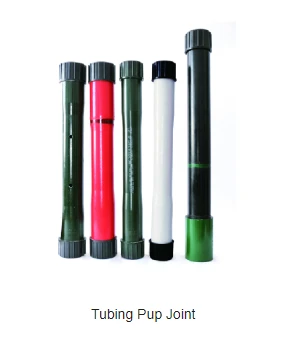- Afrikaans
- Albanian
- Amharic
- Arabic
- Armenian
- Azerbaijani
- Basque
- Belarusian
- Bengali
- Bosnian
- Bulgarian
- Catalan
- Cebuano
- Corsican
- Croatian
- Czech
- Danish
- Dutch
- English
- Esperanto
- Estonian
- Finnish
- French
- Frisian
- Galician
- Georgian
- German
- Greek
- Gujarati
- Haitian Creole
- hausa
- hawaiian
- Hebrew
- Hindi
- Miao
- Hungarian
- Icelandic
- igbo
- Indonesian
- irish
- Italian
- Japanese
- Javanese
- Kannada
- kazakh
- Khmer
- Rwandese
- Korean
- Kurdish
- Kyrgyz
- Lao
- Latin
- Latvian
- Lithuanian
- Luxembourgish
- Macedonian
- Malgashi
- Malay
- Malayalam
- Maltese
- Maori
- Marathi
- Mongolian
- Myanmar
- Nepali
- Norwegian
- Norwegian
- Occitan
- Pashto
- Persian
- Polish
- Portuguese
- Punjabi
- Romanian
- Russian
- Samoan
- Scottish Gaelic
- Serbian
- Sesotho
- Shona
- Sindhi
- Sinhala
- Slovak
- Slovenian
- Somali
- Spanish
- Sundanese
- Swahili
- Swedish
- Tagalog
- Tajik
- Tamil
- Tatar
- Telugu
- Thai
- Turkish
- Turkmen
- Ukrainian
- Urdu
- Uighur
- Uzbek
- Vietnamese
- Welsh
- Bantu
- Yiddish
- Yoruba
- Zulu
api tubing and casing chart
Understanding API Tubing and Casing Chart
In the oil and gas industry, effective drilling and well construction are pivotal for harnessing hydrocarbon resources safely and efficiently. The American Petroleum Institute (API) has established a set of standards for the specification of tubing and casing materials used in these processes. One of the crucial tools in this context is the API tubing and casing chart, a reference guide that outlines specifications and dimensions for various types of tubing and casing.
What is Tubing and Casing?
Before diving into the specifics of the API tubing and casing chart, it is essential to understand the roles of tubing and casing in a well.
- Casing is a series of pipes (typically steel) installed in the drilled wellbore to maintain the integrity of the well. It prevents the walls of the bore from collapsing, isolates different geological formations, and protects groundwater resources. - Tubing is the pipe through which oil and gas are brought to the surface after production. It is inserted into the well casing and is vital for ensuring efficient resource extraction.
API Specifications
The API has developed standards that define various parameters, including the strength, dimensions, and material properties of tubing and casing. Each type is categorized based on several factors, including diameter, weight, material grade, and service conditions.
The API tubing and casing chart provides a detailed overview of these specifications
. It typically includes1. Nominal Pipe Size (NPS) This indicates the diameter of the pipe. This is critical as it affects flow rates and production efficiency. 2. Weight per Unit Length Measured in pounds per foot (lb/ft), this indicates how heavy the pipe is. Weight affects the mechanical properties and strength of the pipe, which is essential for ensuring that it can withstand the pressure of the fluids it carries.
api tubing and casing chart

3. Material Grades The API lists various material grades that denote the strength and suitability of the pipe for specific conditions. Common grades include API 5CT, which contains specifications for the manufacturing of casing and tubing used in drilling.
4. Yield Strength This is a measure of the maximum stress that a material can withstand without permanent deformation. It ensures that the casing and tubing can withstand the pressure of the fluids being transported.
5. Wall Thickness The thickness of the pipe wall is crucial in determining its pressure-bearing capability. The chart includes thickness specifications for each nominal size and grade.
Importance of the API Chart
The API tubing and casing chart serves as a vital resource for engineers and drilling professionals. It ensures that they choose the appropriate materials for specific applications, adhering to safety and regulatory standards. By referencing the chart, professionals can make informed decisions regarding the design and construction of wells, thereby mitigating risks associated with drilling activities.
Moreover, with advancements in drilling technologies and materials science, the API continuously updates its standards. This ensures that the industry's needs are met while promoting safety and efficiency across drilling operations.
Conclusion
In conclusion, the API tubing and casing chart is an indispensable tool in the oil and gas sector. By providing critical information on the specifications and standards for tubing and casing, it aids in the safe and efficient extraction of resources. Engineers and drilling professionals rely heavily on this chart to ensure they are using the right materials for the right conditions, ultimately contributing to the longevity and safety of oil and gas wells. Understanding and utilizing this chart is crucial for any professional involved in the drilling and production process.
-
Tubing Pup Joints: Essential Components for Oil and Gas OperationsNewsJul.10,2025
-
Pup Joints: Essential Components for Reliable Drilling OperationsNewsJul.10,2025
-
Pipe Couplings: Connecting Your World EfficientlyNewsJul.10,2025
-
Mastering Oilfield Operations with Quality Tubing and CasingNewsJul.10,2025
-
High-Quality Casing Couplings for Every NeedNewsJul.10,2025
-
Boost Your Drilling Efficiency with Premium Crossover Tools & Seating NipplesNewsJul.10,2025







